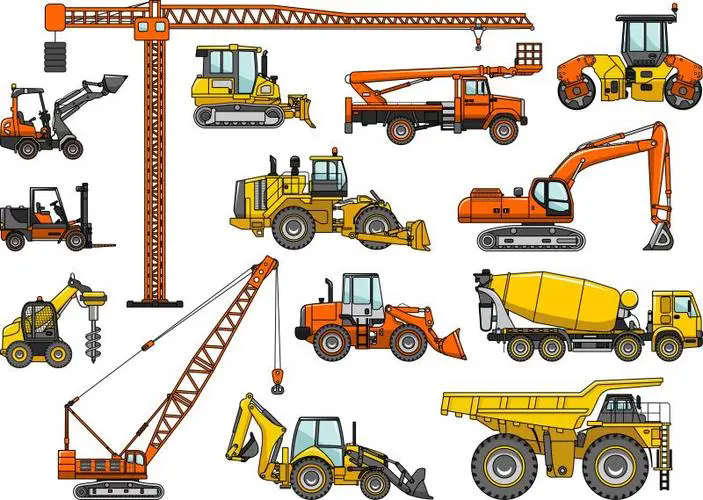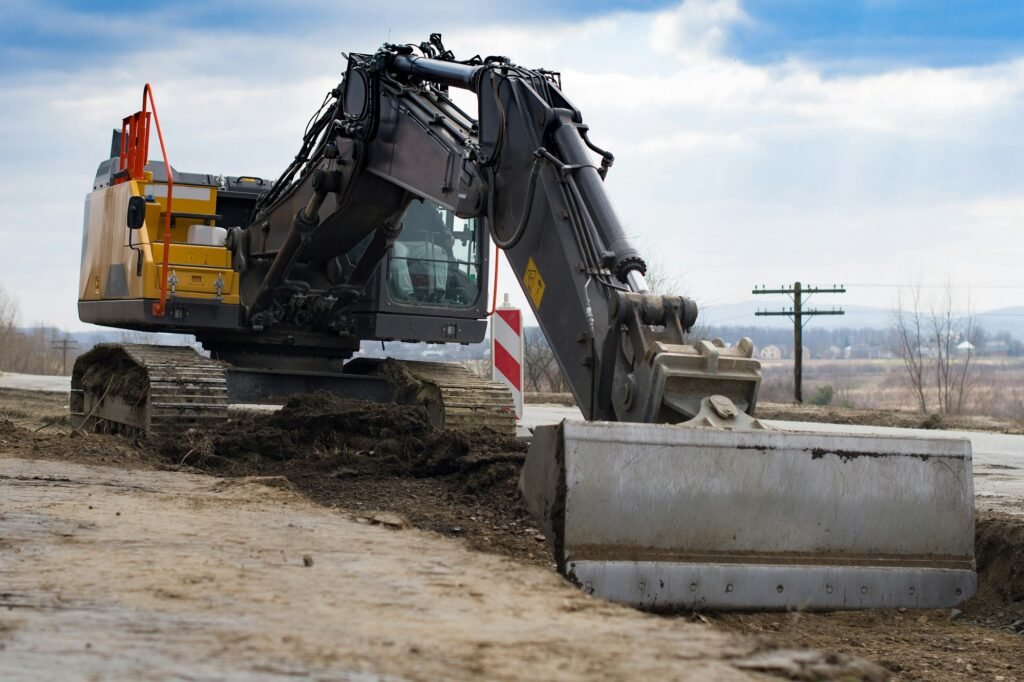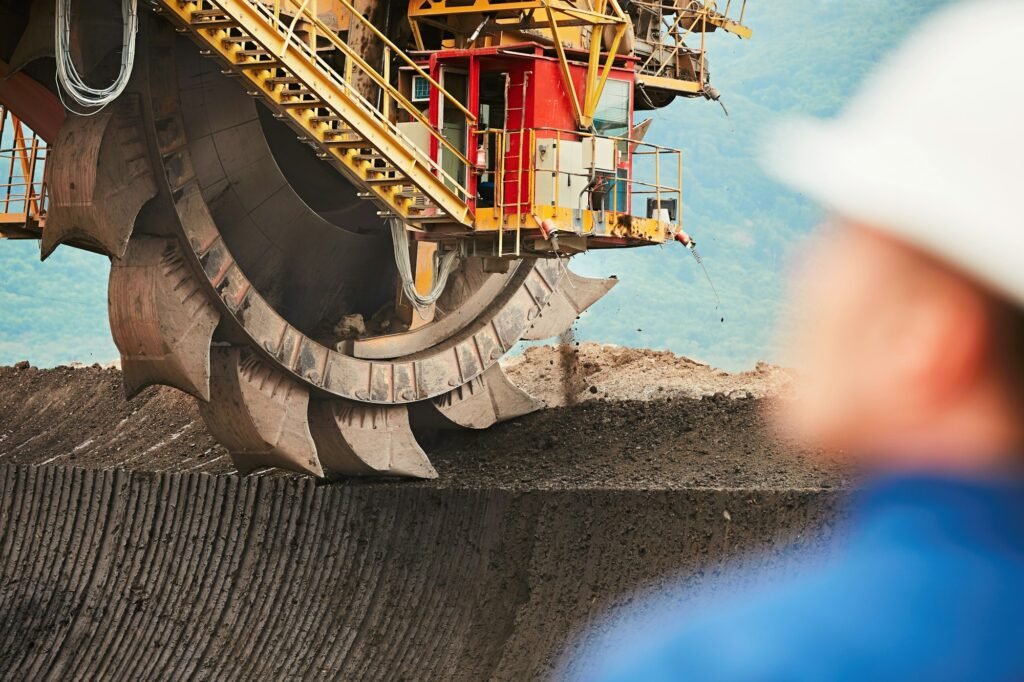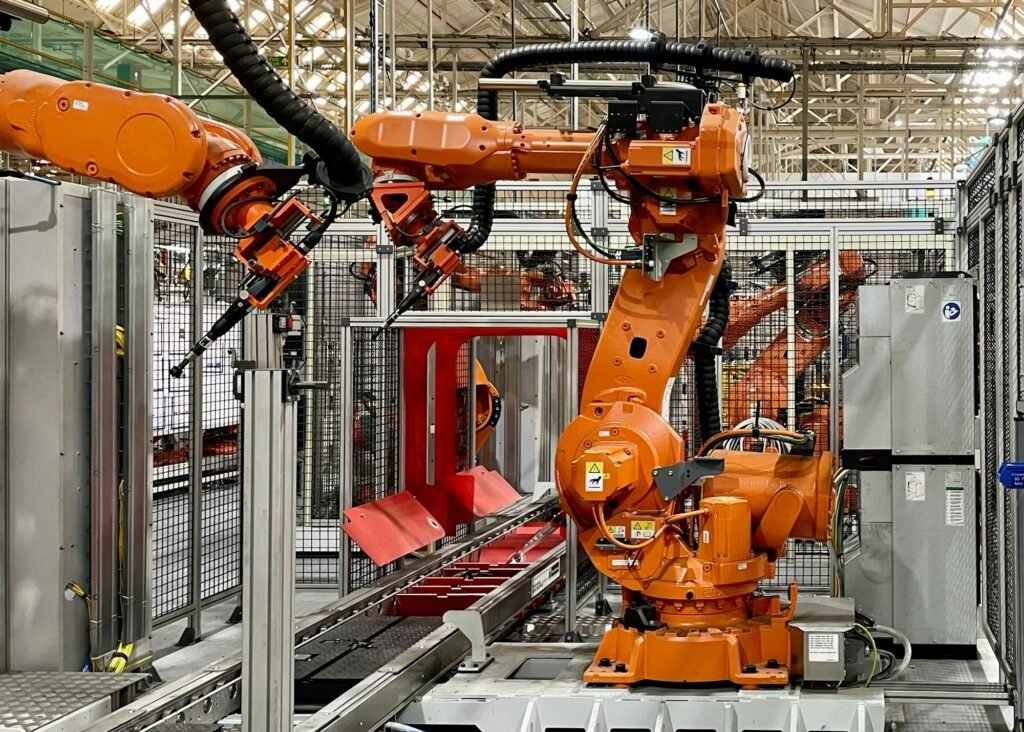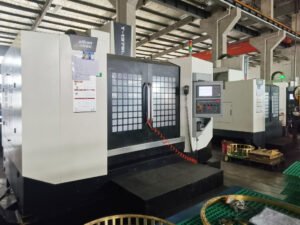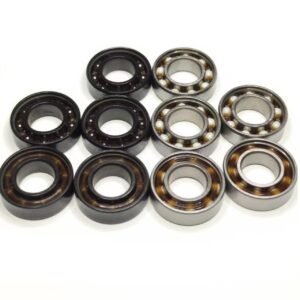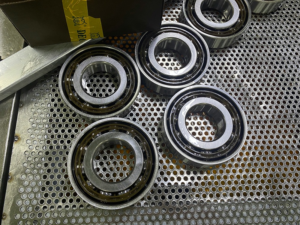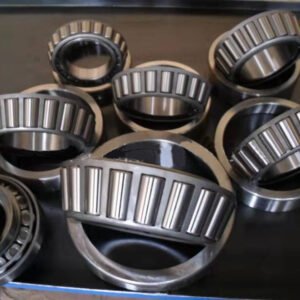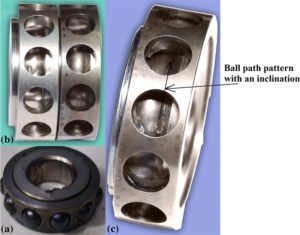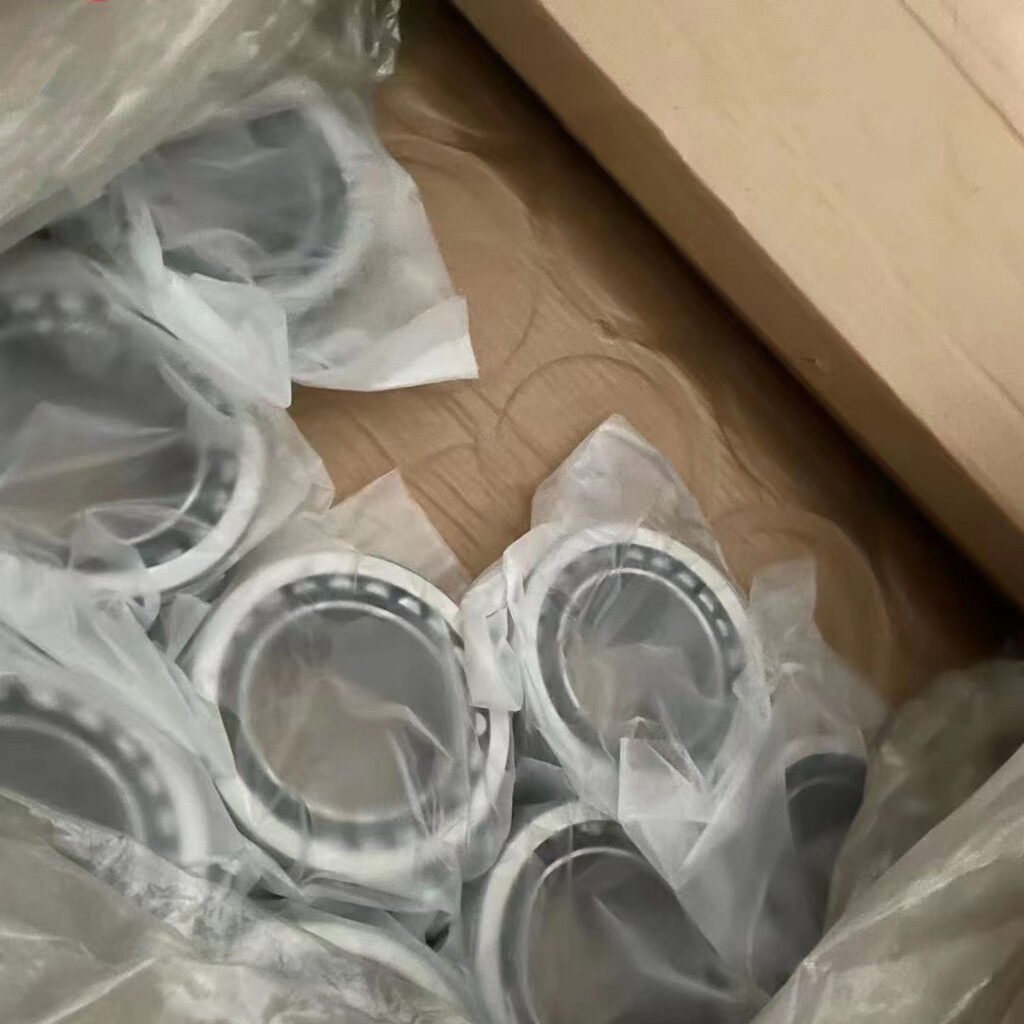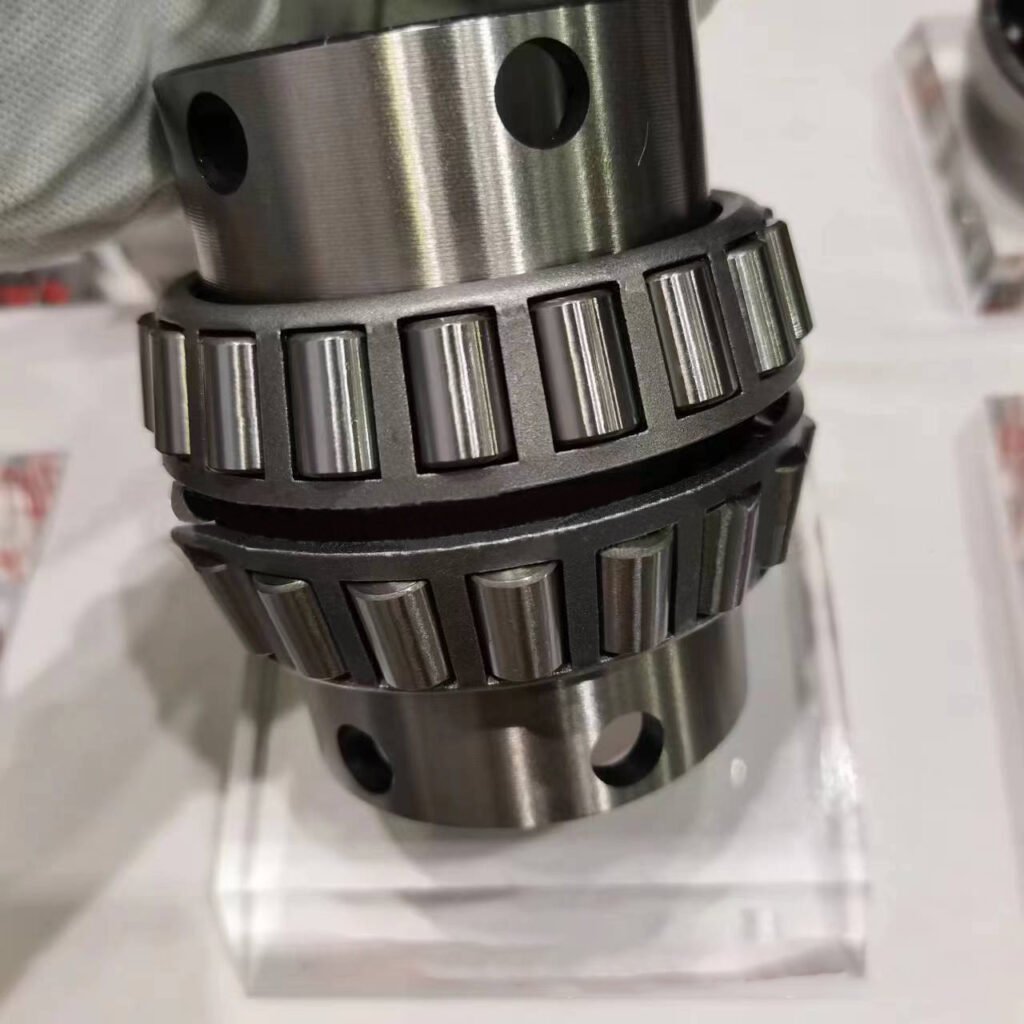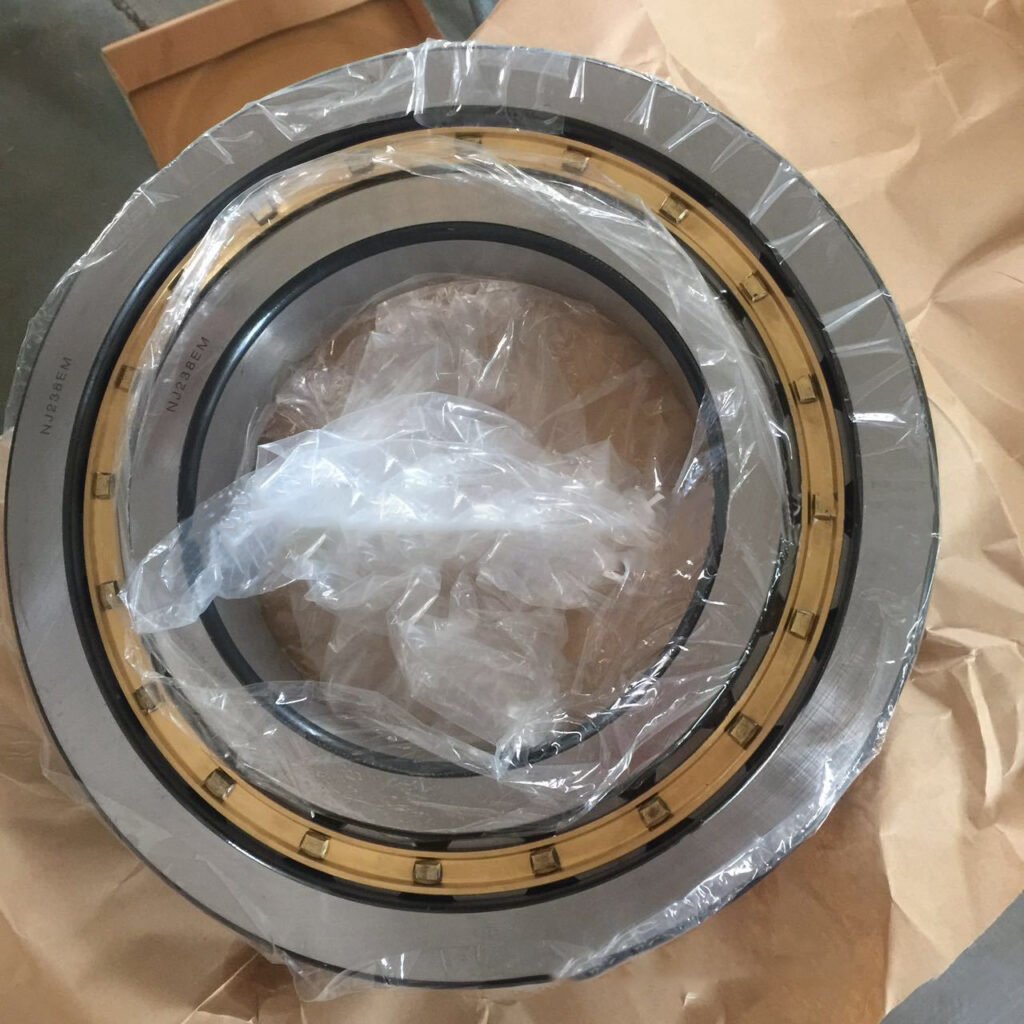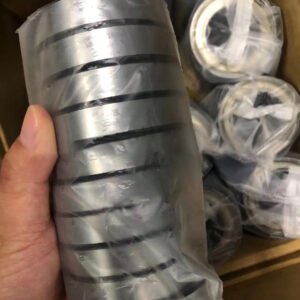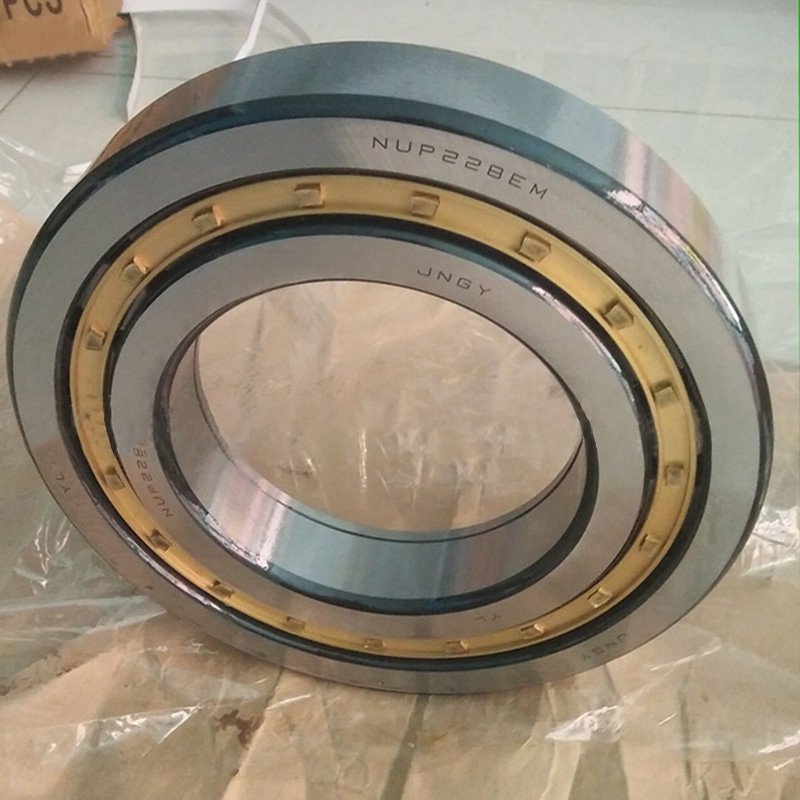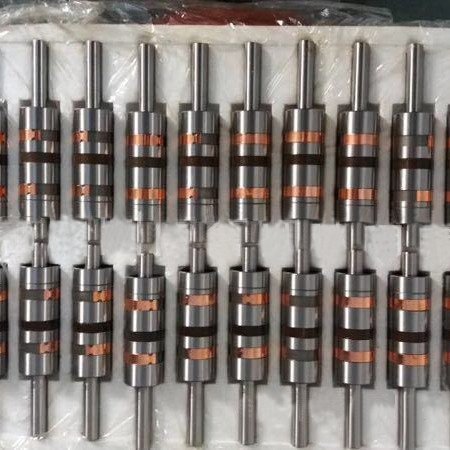First, according to ISO grading standards, precision bearings can be divided into five levels: P0, P6, P5, P4, and P2. The precision level increases in sequence. P0 is the ordinary precision of bearing products, and other levels belong to the precision level. The higher the level, the higher the running accuracy, high-speed rotation, and friction and friction change requirements of the bearing. Then there are higher requirements for the installation of precision bearings. Many people ignore this point, which leads to many problems after the installation of precision bearings. Today, I write this article to explain the difference between the installation of precision bearings and ordinary bearings, so that everyone can have a more accurate understanding of precision bearings.

The difference between precision bearings and ordinary bearings
- The size requirements are different. Precision bearing products have high precision, and their size deviation (inner diameter, outer diameter, ellipse, etc.) is better than that of products with low precision grades.
- The precision requirements for the rotation of bearings during use are different. The rotation control of precision bearings (inner radial direction runout, outer radial runout, end face runout to raceway, etc.) is much higher than the precision requirements of ordinary bearings.
- The surface shape and surface quality requirements are different. The surface shape and surface quality (raceway or groove surface roughness, round deviation, groove deviation, etc.) of high-precision products are stricter than the required values of low-precision products.
- The raw materials for manufacturing precision bearings are more stringent than those for general bearings. Precision bearings usually require the use of materials with better steel performance to ensure their stability and durability in long-term use.
In another article of mine, I explained the “division standards for bearing precision grades and the differences between grades”, which can help you understand more clearly what precision bearings are.
Requirements for accessories when installing precision bearings
Since the accuracy of the equipment used for bearings is within 1μm, there are very high accuracy requirements when selecting equipment accessories, such as: different accuracy of size, shape, etc., especially the matching accuracy between bearings and shafts must reach the same level.
It must also be noted that if the matching parts of the precision bearings do not meet the above requirements, the error of the precision bearings after installation will often be several to 10 times larger than the original bearings, and it is not a precision bearing at all. The reason is that the error of the matching parts is not simply superimposed on the error of the bearings, but is magnified by different multiples and added together.
In order to prevent the bearings from changing in accuracy or deforming after installation, the following points should be noted:
- The roundness of the shaft and seat hole and the verticality of the shoulder should be based on the corresponding accuracy requirements of the bearings.
- It is necessary to accurately analyze and calculate the interference of the rotating ring, and also calculate the appropriate matching of the fixed ring through accurate data.
- The interference of the rotating ring should be as small as possible. As long as the influence of thermal expansion at working temperature and the influence of centrifugal force at the highest speed are ensured, creep or sliding of the tight fit surface will not occur. The fixed ring should be selected with extremely small clearance fit or interference fit according to the working load size and bearing size. Too loose or too tight is not conducive to maintaining the original precise shape.
- If the bearing runs under high-speed conditions and the working temperature is high, special attention should be paid to the fit of the rotating ring not being too loose to prevent eccentric vibration, and the fit of the fixed ring should not have gaps to prevent the ring from deforming under load and exciting vibration.
- The condition for a small interference fit for the fixed ring is that both matching surfaces have high shape accuracy and small roughness, otherwise it will cause installation difficulties and even more difficult disassembly. In addition, the influence of thermal elongation of the spindle needs to be considered.
- The spindle using paired double angular contact ball bearings is mostly lightly loaded. If the interference fit is too large, the internal axial preload will be significantly larger, causing adverse effects. The main shaft using double-row short cylindrical roller bearings and the main shaft using tapered roller bearings have relatively large loads, so their interference fit is also relatively large.
Installation of precision bearings
Assembly steps of precision sliding bearings
- Press-in sleeve method: According to the size of the sleeve and the size of the interference fit, it can be assembled by pressing in or knocking in.
- Sleeve positioning: After pressing in the sleeve, the sleeve of the sliding bearing with a heavier load must be fixed with a set screw or a locating pin, as shown in the figure below.

- Shaft sleeve hole trimming: For integral thin-walled shaft sleeves, the inner hole is prone to deformation after press-fitting, such as the inner diameter being reduced or becoming elliptical or conical.
- Shaft sleeve inspection Use an inner diameter micrometer, as shown in the figure below, to inspect two or three places in the hole in a mutually perpendicular direction to determine the cylindricity, taper and size of the shaft sleeve.

Assembly implementation of precision rolling bearings
1. Selection of rolling bearing fit
1.1 When the load direction remains unchanged, the rotating ring should be tighter than the fixed ring.
1.2 The greater the load, the higher the speed, and when there is vibration and impact, the tighter the fit should be.
1.3 When the rotation accuracy of the bearing is required to be high, a tighter fit should be adopted to reduce the original clearance of the bearing by means of interference.
1.4 When the bearing needs to consider axial movement, the fit between the outer ring and the housing hole should be looser.
1.5 The fit between the bearing and the hollow shaft should be tighter to prevent the shrinkage of the shaft from loosening the fit.
2. Preparation before rolling bearing assembly
2.1 Prepare the required tools and measuring tools according to the bearing to be assembled.
2.2 Check the parts matching the bearing, such as shaft, housing, end cover, etc., according to the drawing requirements to see if there are dents, burrs, rust and solid particles on the surface.
2.3 Clean the parts matching the bearing with gasoline or kerosene, wipe them carefully with a clean cloth, and then apply a thin layer of oil.
2.4 Check whether the bearing model is consistent with the drawing requirements.
2.5 When cleaning the bearing, if the bearing is sealed with anti-rust oil, it can be cleaned with gasoline or kerosene: if the bearing is rust-proofed with thick oil and anti-rust grease, it can be heated and dissolved with light mineral oil for cleaning (the oil temperature does not exceed 100℃), immerse the bearing in the oil, and take it out of the oil after the anti-rust grease is dissolved, and then clean it with gasoline or kerosene after cooling.
3. Assembly method of rolling bearings
(1) Assembly of cylindrical bore bearings
3.1.1 When the inner ring of the bearing is interference fit with the shaft and the outer ring is loosely fit with the housing hole, the bearing can be installed on the shaft first.
3.1.2 When the outer ring of the bearing is interference fit with the housing and the inner ring is loosely fit with the shaft, the bearing can be pressed into the housing hole first.
3.1.3 When the inner ring of the bearing is interference fit with the shaft and the outer ring is loosely fit with the housing hole, the end face of the assembly sleeve should be made into a circular ring that can simultaneously press the inner and outer ring ends of the bearing.
3.1.4 When assembling a diagonal contact roller bearing, since its inner and outer rings are separated, first install the inner ring on the shaft, then install the outer ring in the housing hole, and then adjust the clearance, as shown in Figure 6-16d.
(2) Assembly of tapered bore bearings
It can be directly installed on the tapered shaft neck, or on the tapered surface of the adapter sleeve and withdrawal sleeve.
(3) Assembly of thrust ball bearings
The tightening ring and loose ring should be distinguished. Since the inner hole of the loose ring is larger than that of the tightening ring, the tightening ring must be placed against the plane of the rotating part and the loose ring against the plane of the stationary part during assembly, as shown in the figure below.
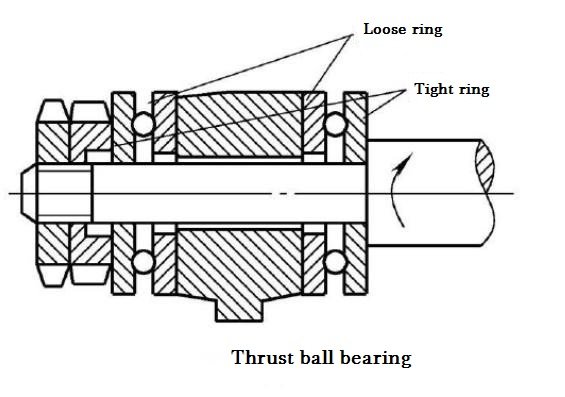
(4) Directional assembly of rolling bearings is to place the eccentricity (radial runout error) of the inner rings of the front and rear bearings of the spindle and the error value of the center line of the spindle tapered hole in the same axial section and assemble them in a certain direction.
- The radial runout of the front spindle bearing is smaller than that of the rear spindle bearing.
- The directions of the maximum radial runout of the front and rear bearings are placed in the same axial section and on the same side of the rotation centerline.
- The directions of the maximum radial runout of the front and rear bearings are opposite to the deviation direction of the center line of the spindle tapered hole.
You can also read my other article, in which I talk about “Misunderstandings about Bearing Installation” to help you install bearings in the correct way.
Summary
In summary, as a key component in the modern industrial field, the performance of precision bearings directly affects the operating accuracy and stability of the equipment. In order to meet various high-standard application requirements, we need to pay attention not only to the design and manufacturing process of the bearings themselves, but also to strictly screen and control their accessories and installation. Only in this way can we ensure the excellent performance and stability of precision bearings in practical applications.

